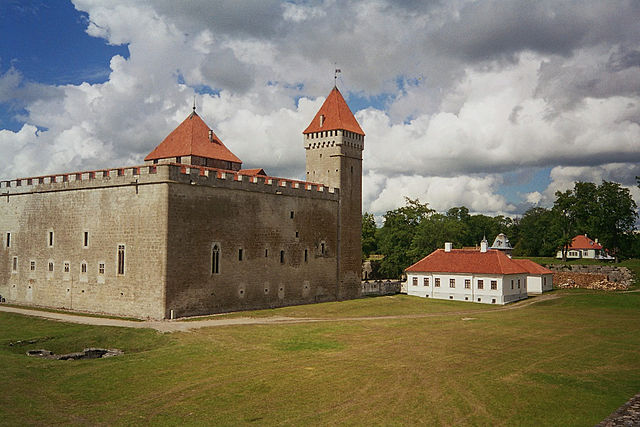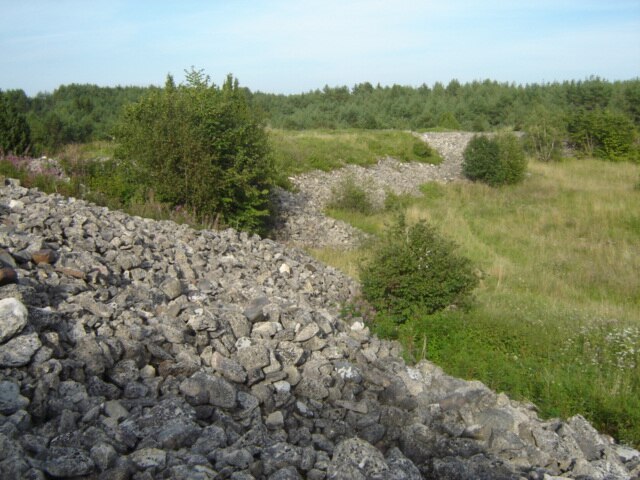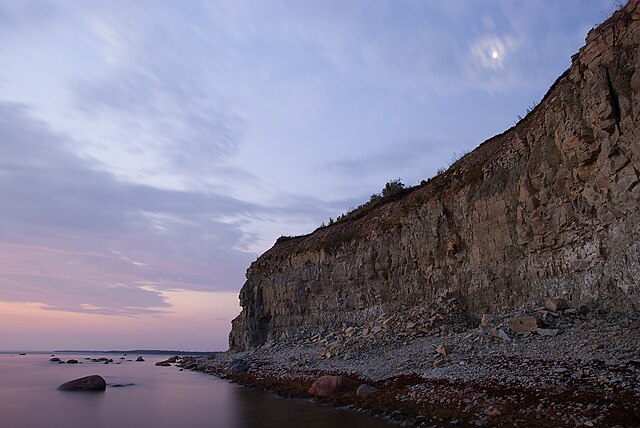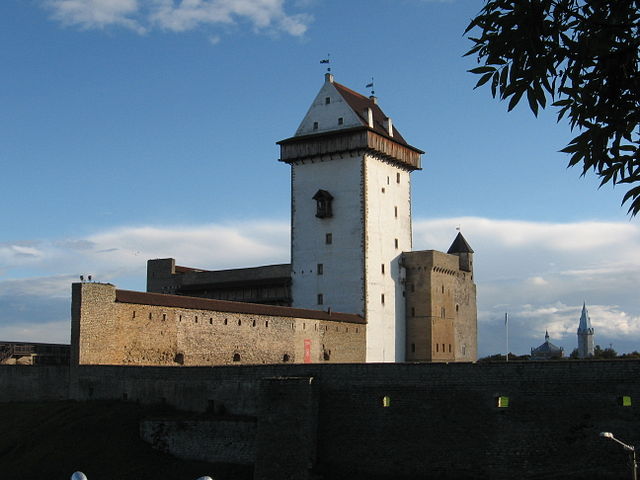Saaremaa is the largest and most populous island in Estonia. Measuring 2,673 km2 (1,032 sq mi), its population is 31,435. The main island of the West Estonian archipelago, it is located in the Baltic Sea, south of Hiiumaa island and northwest of the Gulf of Riga. The administrative centre of the island, and of the Saare County, is the town of Kuressaare, which in January 2018 had 13,276 inhabitants.
Kuressaare Castle in Kuressaare
Remnants of Valjala Stronghold
The 1241 Treaty between Livonian Order, Bishopric of Ösel–Wiek and Oeselians at National Archives of Sweden
Panga Cliff
Estonia, officially the Republic of Estonia, is a country by the Baltic Sea in Northern Europe. It is bordered to the north by the Gulf of Finland across from Finland, to the west by the sea across from Sweden, to the south by Latvia, and to the east by Lake Peipus and Russia. The territory of Estonia consists of the mainland, the larger islands of Saaremaa and Hiiumaa, and over 2,300 other islands and islets on the eastern coast of the Baltic Sea, covering a total area of 45,335 square kilometres (17,504 sq mi). Tallinn, the capital city, and Tartu are the two largest urban areas of the country. The Estonian language is the indigenous and official language of Estonia, and it is the first language of the majority of the country's population of 1.4 million.
Bronze Age stone-cist graves in north Estonia
Old Town of Tallinn
Narva fortress.
"Academia Dorpatensis" (now University of Tartu) was founded in 1632 by King Gustavus as the second university in the kingdom of Sweden. After the king's death it became known as "Academia Gustaviana".








